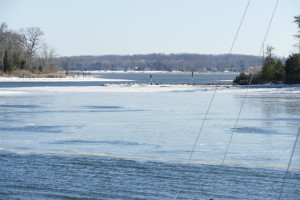Annapolis is known as the sailing capital of the US or at least one of the best places for sailors anyway. And we all know sailors like to party. We were invited to a party at the Annapolis Yacht Club so we rented a limousine for the occasion.
What a limousine. Have you rented one recently? Wow have they changed. Sure they still have the very staid Lincoln town cars but some are just incredible. Some of the party buses are even more amazing. We had a Hummer that had flat screen TVs, amazing color coordinated interior with a wild LED lighting scheme. Then of course there was the bar area. We must admit we did get the party started a bit before we got to the party. Heck, we could have just stayed and partied in the limo.
Then the party was amazing. There was a great band playing a mix of music. The location is just incredible. Even if you are inside, there are large windows so you can see the water and all the boats on moorings or moving around the harbor. There are balconies wrapping around the building. It was a lovely evening and it was fun to just go out there and look around. It was also a bit quieter and easier to talk.
The appetizers that were passed around were amazing. There were some potstickers, appetizers with smoked salmon, roasted figs with blue cheese, scallops wrapped in bacon and more. Plus there was someone shucking oysters for anyone who wanted raw oysters.
Then there were the drinks. Of course, all the usual drinks were available. But they also had jello shots. Best of all though was the ice luge. Not like in the Olympics, but for the tequila. There was a big ice sculpture and they would pour the tequila down a path in the ice and you would hold your glass at the end and get chilled tequila. But, before you did that, there was a salt lick, like they use for cows. It was a large block of salt that was somewhat hollowed out and moistened. You would turn your glass upside down and coat the rim with the salt. Then you got your shot of tequila. Not surprisingly, a few people were a bit too enamored with this and had a few too many.
The only thing I have heard of that tops this was a birthday party for a friend who is a urologist. Much to his embarrassment, his wife ordered an ice sculpture. Except this was an ice sculpture that looked like a penis and had a hole drilled down the middle. They were doing lemon vodka shots so when you poured the vodka down the hole and it came out, it looked like it was peeing.
In any case, it was a phenomenal party and we all probably drank and ate too much and were very glad we had decided to take a limo. Didn’t have to worry about driving and everyone got home with no problems. Sailors definitely know how to party.
Oh, and besides being a sailing and party capital, Annapolis is the capital of Maryland. From what we understand, politicians like to party too. And you may not know that Annapolis was the capital of the United States for a short while.

